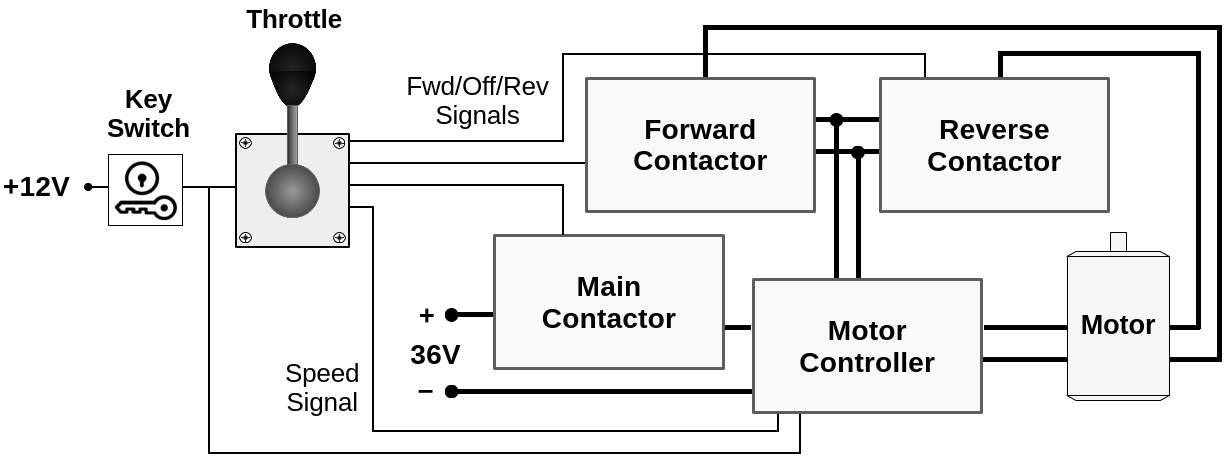36V or 48V Systems
Propulsion System Overview

Power
Switched 12V powers the contactor coils and provides +12V to the motor controller.
36V or 48V powers the motor via the contactors and motor controller.
Throttle
The throttle receives +12V when the key switch is on. It outputs +12V to signal forward/off/reverse state and to provide +12V to the motor controller. The throttle also provides a speed signal (0-100%) in the form of resistance varying between 5 and 0 ohms in either forward or reverse.
Infaspeed Enclosure
The Infaspeed enclosure contains high voltage components of the motor control system. It has diagnostic LEDs on a circuit board that is Duffy-specifc, but all other components are common.
Connectors and Low Voltage Circuits
There are three 36/48V connectors - one that provides battery inputs and two that connect to
the motor. Another connector provides all throttle inputs.
A circuit board with LEDs visible from outside of the enclosure indicate Power and
Forward/Off/Reverse signals. This is the only Duffy-specific part in the Infaspeed
enclosure.
Motor Controller
The motor controller is a programmable electronic device that interprets signals from the throttle, battery, and motor to control operation of the motor. It primarily keeps the motor operating within safe parameters and adjusts speed in response to the throttle input. It also implements fail-safe behavior that will shut off the motor if ambiguous or dangerous signals are received. An example of this is if the key switch is turned on when the throttle is in forward, the motor will not run until the throttle is first moved to off and then to forward.
Main Contactor
The main contactor is normally closed. It switches battery voltage to feed the motor controller when the throttle provides either a forward or reverse signal with the key switch on.
Forward & Reverse Contactors
These two contactors are usually joined into a single unit. They act together to switch
polarity of the battery circuit feeding the motor stator, causing the motor to run in either
forward or reverse rotation.
Motor
The boat has a DC Series motor. This type of motor will change direction by changing polarity of either the stator or armature. Our boat switches the stator polarity.
